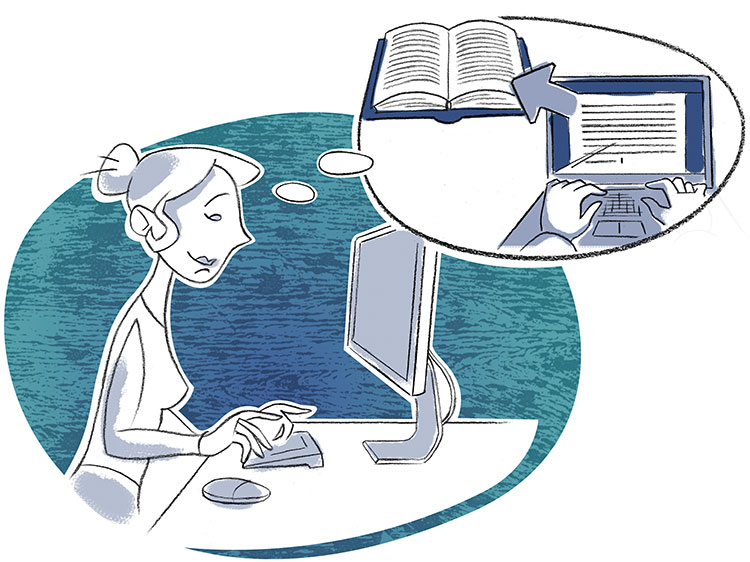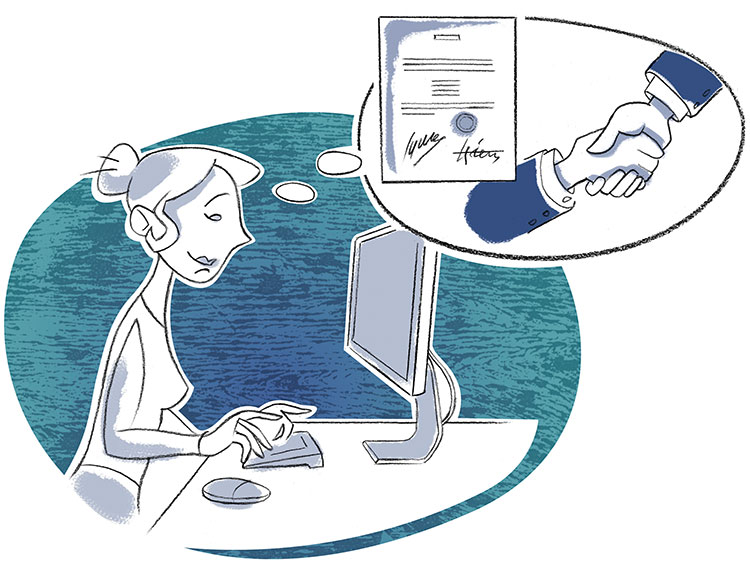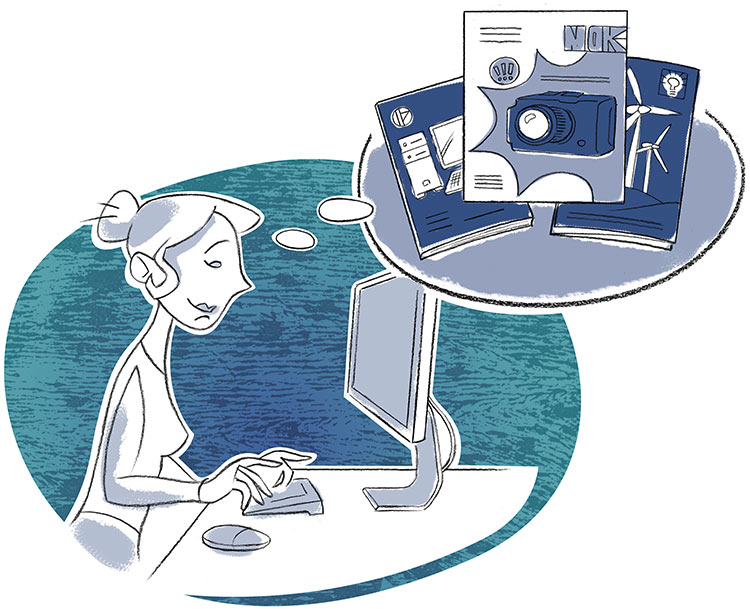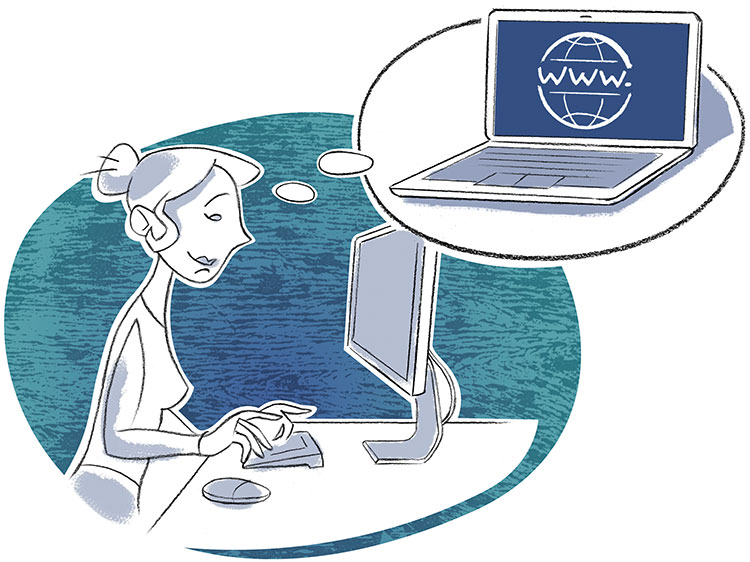Specialist texts
My team can translate specialist material from various sectors of technology, industry and IT. We can work from datasheets, specifications, non-fiction books and technical manuals, user instructions and all sorts of technical documents. I form a custom team of two or three transla-tors, a typesetter and an editor for each translation project. Each member of the team is respon-sible for their own area of expertise and focuses on that. As team leader, I coordinate them all and handle their interaction with the client. Working this way has the advantage that translators can work more efficiently on the task at hand, without being distracted by formatting or other issues. Another benefit is that I can choose the most suitable translator for each project; I deploy individuals who specialise in that particular sector and know the relevant languages.

Our tech-nical translators may also work as engineers. For example, a translator with experience in tiling would be used for a translation about ceramics and glazed tiles. We deliver a finished product: the typeset file with all images and diagrams presented in the target language.We do use dictionaries as reference materials. However, for reasons of confidentiality we do not use online translation programs. We do not use any translation memory software (also known as ‘computer aided translation tools’ or CAT tools) unless we agree this with the client in advance That is because many online translation tools, and even some used offline, store the source text and translation. This can raise issues with data retention and security. We can also agree to only ever transmit your data in an encrypted format.
Contracts
To translate contracts, the translator must be familiar with the legal system in the country which the text is from, as well as the legal system in the country for which the translation is intended. For example, Russian contracts will be expressed differently when they are translated into US English, UK English or South African English, to reflect their different legal systems and terminology. A Russian-language legal text from Ukraine will use different terms to a Russian-language text from the Russian Federation, Kazakhstan or Uzbekistan. These texts emerge from different legal systems, and the word choice will be influenced by these. Indeed, choosing the perfect translator for each contract translation is an art in itself. I rely on my knowledge and experience as a specialist translator, built up over almost three decades.

The particular features of contracts include internal coherence, the strictly consistent use of terms, a concise and neat form of expression and many crossreferences. The translator must maintain all the elements in this linguistic construct in an appropriate way for the target language. Long sentences with complex clauses, technical nuances of meaning and complete continuity in the use of terms must all be conveyed in the target language while maintaining the meaning. It is not necessarily sufficient to employ the correct terms in the target language which correspond to the target country’s legal system. In this context, the translator’s job is to bring the nuances of meaning inherent in the terms from the original country’s system into the target language version. What is more, this top translation quality must be maintained throughout texts which often reach 150 pages in length. A translation which uses the right terminology, based on appropriate specialist knowledge, should be seen as an investment in avoiding potential legal disputes later. An excellent translation will be complete, correct and use the right terminology, while also constituting a coherent whole.
Print-ready texts for publication
My team produces print-ready texts such as manuals and textbooks, image brochures, prospectuses and websites. Text for publication must be formulated perfectly and choose just the right terms. For book-length texts comprising several hundred pages, I bring together project teams of translators who all specialise in the relevant subject area with a DTP specialist who is responsible for layout and typesetting, and an editor/proofreader, ideally also with a relevant subject specialism. As a guide, it can take 8–12 weeks or more to translate and typeset a 200-page, nonfiction book. Such projects require planning, coordination and agreement between everyone involved. I believe that individuals working on a project together are like the gears in a watch mechanism, and must be finely tuned to one another.
Advertising and marketing
Translating advertising is a creative endeavour. There’s even a special term for it: transcreation. This is the process by which the message in an advertising campaign is transferred, but not necessarily the individual words or phrases in an advertising slogan. Indeed, it is often impossible to convey a comparable message in the target language using the same sentence. American President Barack Obama had a resonant slogan, “Yes we can!” which cannot be fully encapsulated in the words themselves. In the US, the slogan came to represent the defiance and positivity with which he used it while campaigning, and to embody his historic election victory. For example, the 2009 Ukrainian presidential election campaign for Yulia Tymoshenko used the slogan “вона працює”, which literally means “She works”, but these English words do not convey the original message or have the same impact. She contrasted herself with her male rivals, and ‘she works’ implied that they did not, she referred to them as oligarchs who were betraying the public. Adverts always relate to their context, without which much of their message is lost. Translating adverts does involve context: replicating a new context in the target culture. If the original contextual link cannot be maintained, a new one must be (trans)created.

Website localisation
Looking for new markets means communicating in other languages. If a company wants to reach end customers in Russia, it needs to address them in their own language. Regardless of globalisation and the role English plays as a lingua franca worldwide, customers in Russia still expect the user instructions for their coffee machines to be written in Russian. So the process of winning new markets abroad often begins with translation – by ‘localising’ the expanding company’s web presence into the language of their target market. The content of this website will be translated, often directly in the content management system itself (CMS).

Hence a knowledge of such systems is another valuable skill for translators to have; I have experience of translating websites in WordPress and Joomla. It is also possible to send the translator your web content in a Word or other text file, if for example you are not happy giving a translator access to the back end of your website, the web content is text-heavy, or the translator is not familiar with the relevant CMS. The translator can then work in this file, and leave you to enter the text into the CMS. This is a process often used by major companies with extensive web presences. It avoids them having to allow several translators access to their website at the same time, if localising it into multiple languages simultaneously.
 Українська
Українська  Русский
Русский  English
English  Deutsch
Deutsch 

